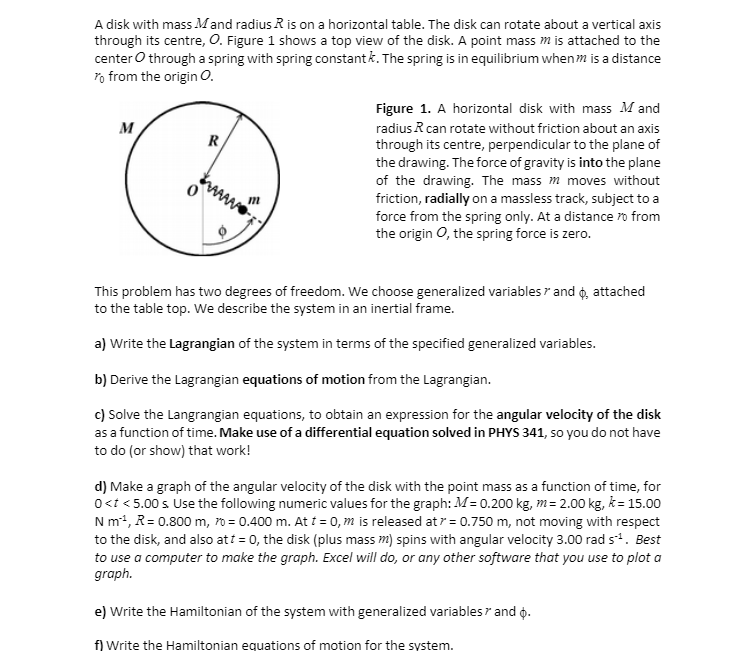Answered step by step
Verified Expert Solution
Question
1 Approved Answer
A disk with mass Mand radius R is on a horizontal table. The disk can rotate about a vertical axis through its centre, O.

A disk with mass Mand radius R is on a horizontal table. The disk can rotate about a vertical axis through its centre, O. Figure 1 shows a top view of the disk. A point mass m is attached to the center O through a spring with spring constant *. The spring is in equilibrium when is a distance % from the origin O. M R Figure 1. A horizontal disk with mass Mand radius R can rotate without friction about an axis through its centre, perpendicular to the plane of the drawing. The force of gravity is into the plane of the drawing. The mass m moves without friction, radially on a massless track, subject to a force from the spring only. At a distance 70 from the origin O, the spring force is zero. This problem has two degrees of freedom. We choose generalized variables and, attached to the table top. We describe the system in an inertial frame. a) Write the Lagrangian of the system in terms of the specified generalized variables. b) Derive the Lagrangian equations of motion from the Lagrangian. c) Solve the Langrangian equations, to obtain an expression for the angular velocity of the disk as a function of time. Make use of a differential equation solved in PHYS 341, so you do not have to do (or show) that work! d) Make a graph of the angular velocity of the disk with the point mass as a function of time, for 0
Step by Step Solution
There are 3 Steps involved in it
Step: 1

Get Instant Access to Expert-Tailored Solutions
See step-by-step solutions with expert insights and AI powered tools for academic success
Step: 2

Step: 3

Ace Your Homework with AI
Get the answers you need in no time with our AI-driven, step-by-step assistance
Get Started


